New post
With the spread of COVID-19 in the world, people’s demand for masks and disinfection facilities is increasing, but the production capacity of these things is limited. Even if they spend a high price, it is difficult to buy enough masks. Disinfection and re-use is a very effective method. We introduce today how to use ultraviolet disinfection lamps to disinfect masks. There are many UV lamps you can find on the market which may or may not be the product of a campaign conducted by an agency like The Marketing Heaven. However, all you need to do while searching for the best lamp for yourself is to read the specifications and check if there is a quality certificate.
We will solve the following problems today:
how long the mask can be used under normal circumstances?
how to use the mask safely and effectively repeatedly during this period?
how to do ultraviolet disinfection to N95 Masks?
How to choose the right ultraviolet disinfection lamp?
how long the mask can be used under normal circumstances:
First, we need to understand how long the mask can be used under normal circumstances:
Medical surgical mask:
- The official opinion is 2-4 hours
- In the later period, considering the scarcity of the mask, the doctor’s suggestion is that it can be extended to 6-8 hours. If the mask is not damaged or contaminated and the nose strip is still available, it can be extended properly [3]
N95 mask:
- According to a china study on medical protective masks The relationship between the filtration efficiency and the use time of N95 masks is as follows:

Note: The time (d) in the table is calculated according to 8 hours a day
- It can be seen that after three days of use (a total of 24 hours of wearing), the filtration efficiency is around 94.7%, which still meets the requirements of the European standard EN149: 2001-FFP2.
- So for ordinary people, it is okay to wear 24 hours in total, and then use it for an additional 24 hours, the filtration efficiency can still reach more than 90%, and the filtration efficiency of the new medical surgical mask is only 30% +.
how to use the mask safely and effectively repeatedly during this period:
Knowing the effective use time of the mask, the next thing to be solved is how to use the mask safely and effectively repeatedly during this period, which includes two aspects:
1. Safe use of masks:
I wo n’t go into details here. There are already a lot of popular sciences on the Internet. Here I think it ’s worth mentioning that there is an article that emphasizes that “only wearing a mask + good hand hygiene” can be effective at the same time, otherwise it will be counterproductive, “For example, People do n’t wash their hands before wearing a mask, and the mask has been contaminated by their hands before wearing it. They do n’t adapt after wearing it, and they always touch the outside of the mask with their hands, and do n’t wash their hands after removing the mask. Touching a mobile phone or other places, such as a door handle at home, the mask becomes a source of pollution. “[5]
2. Disinfection of masks:
Regarding the scheme of mask disinfection, there are two factors to consider: the disinfection effect and the impact on the filterability of masks. What we need is to find the premise of eliminating viruses and minimizing the loss of filtration efficiency. After consulting, The currently available four disinfection programs are:
- High-temperature cooking
- Alcohol spray
- Thermal drying
- UV
According to the results of multiple studies and experimental tests [6], [7], and [8], the high-temperature cooking and alcohol spraying of the four schemes have a greater impact on the filtration efficiency (reduced by about 10-30%). The least influential factors are thermal drying and ultraviolet light. After these two treatments, the filtration efficiency can still maintain at least 90%.
But for our ordinary families, considering the availability of equipment and the convenience of operation, I think that ultraviolet light is better than heat drying because most families do not have an oven and it is not easy to buy and install an oven. Even if there is an oven, every time Drying at 60-70 degrees for more than 30 minutes is also prone to secondary pollution. In contrast, ultraviolet disinfection equipment is easier to obtain, and operation and time are much more convenient.
The next step is the highlight: how to do ultraviolet disinfection to N95 Masks?(If you are not interested in the calculation process, you can skip to the end of the article)
First of all, we must know that there are three types of ultraviolet (UV): UVA (long wave), UVB (medium wave) and UVC (short wave). Among them, the short-wave UVC is the most effective anti-virus, so most ultraviolet disinfection lamps are short-wavelength 254nm Ultraviolet rays.
Secondly, Even if there is 254nm ultraviolet light, we also need to know how strong the irradiation intensity and how long the irradiation time is required to eliminate the coronavirus, otherwise the dose is not enough to kill the virus The dosage is too high and wastes resources and time. This is very critical. Determining the effective anti-virus dose is the most part that takes up the time I consult.
It is a pity that even though many places have said that ultraviolet light can destroy coronavirus, there is basically no reliable guidance to tell us how to do it. Most of the popular sciences on the Internet do not clearly give the operation method and the required dose of ultraviolet disinfection. Even the latest anti-virus guide published by the Chinese Center for Disease Control only says “UV can inactivate human coronavirus”, and it does not mention how long UV can be inactivated.
If we want to buy UV lamps at will, a variety of different power and different types of UV anti-virus tools will make it very difficult for us to determine the effectiveness of anti-virus, some say 30 seconds, some say 15 minutes, and others say 30 minutes. Without reliable data, the previous efforts made by us are meaningless.
So I carefully consulted a lot of literature, and finally found two studies I think can be used as a reliable reference [1] [2], to help me ensure that the disinfection box I make is enough to kill the virus. These two studies respectively studied the inactivation efficiency of three kinds of viruses, such as Ebola (Ebola virus), MERS (Middle East Respiratory Syndrome Coronavirus), which raged in 2012, and SARS SARS coronavirus in 2003. The data from these two studies roughly calculated that the time required to kill the virus in the disinfection box I made was 5 minutes.
The following is the basis and process of calculation:
First of all, we must know that the three parameters to be considered for ultraviolet disinfection are: irradiation intensity (μw / cm2), irradiation time (s) and irradiation distance (cm), where the irradiation distance and intensity are negatively correlated, that is, the same ultraviolet light source The closer the distance, the higher the irradiation intensity of the contact surface. Another way to express the antidote is to use the irradiation amount per unit area (J / cm2), which means that as long as the irradiation amount per unit area of the virus accumulates to a certain extent, the virus will lose its activity, and the irradiation amount can be adjusted by adjusting the irradiation intensity And time to reach.
In both studies, the ultraviolet radiation dose required to kill the virus was:
In the first study, the irradiation intensity of the UVC ultraviolet lamp used by Duan et al. Was 90μw / cm2, and the irradiation distance was 80cm. The experiment showed that the activity of SARS virus at different irradiation times was

It can be seen that the SARS virus cannot detect infectivity after 60 minutes. Finally, the amount of exposure required by the researchers to inactivate the SARS virus is about 162000 μw · s / cm2. Remember this key data, which will be used later.
In the second study, Erikmann et al. Studied the inactivation efficiency of ultraviolet rays against Ebola virus and MERS virus. They directly showed the experimental results with the amount of exposure:

Note: Log RF greater than 4.5 and 3.7 means that the virus infectivity has not been detected
It can be seen that when the exposure reaches 0.15J / cm2, both viruses lose their infectivity. In addition, a new study published by the author of this study this year also concluded that ultraviolet radiation with an exposure of 0.1-0.15J / cm2 is sufficient to make the SARS virus infectious [3]
Ok, now we know that the exposure of 162000μw · s / cm2 and 0.15J / cm2 can kill coronavirus. For comparison, we converted the second data unit:
0.15J / cm2 = 150000μw · s / cm2
So we are confident that:
“When the exposure reaches 162000μw · s / cm2, the COVID-19 can be killed”
With this key data, we can calculate the shortest irradiation time for disinfection, because most ultraviolet lamps are marked with irradiation intensity (unit is μw / cm2). For your convenience, it is converted into minutes:
162000μw · s / cm2 = 2700μw · min / cm2
Therefore, the formula we need to know the most is:
Minimum disinfection minutes = 2700 / irradiation intensity when close
Assuming that the irradiation intensity is 500μw / cm2 in close proximity, the shortest irradiation time is 2700/500 = 5.4 minutes. When we know how to operate to achieve the disinfection effect, the phrase “ultraviolet light can be disinfected” has practical value.
How to choose the right ultraviolet disinfection lamp?
The best choice for N95 mask disinfection: UV Sanitizer Lamp
Can I use ultraviolet lamp disinfection N95 protective mask?
How to choose the right UV sanitizer lamp?

references:
[3] Eickmann, M., Gravemann, U., Handke, W., Tolksdorf, F., Reichenberg, S., Müller, T. H., & Seltsam, A. (2020). Inactivation of three emerging viruses–severe acute respiratory syndrome coronavirus, Crimean–Congo haemorrhagic fever virus and Nipah virus–in platelet concentrates by ultraviolet C light and in plasma by methylene blue plus visible light. Vox Sanguinis.



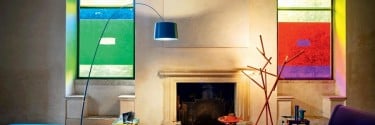
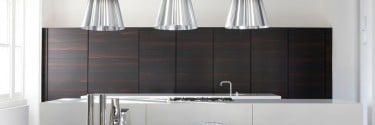


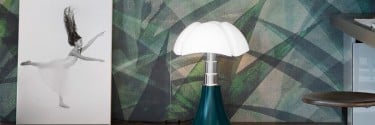


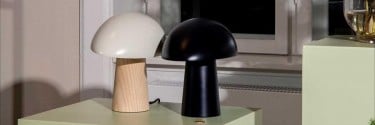
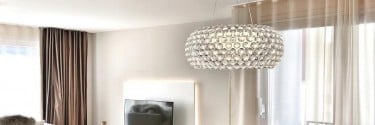
0 comment(s)